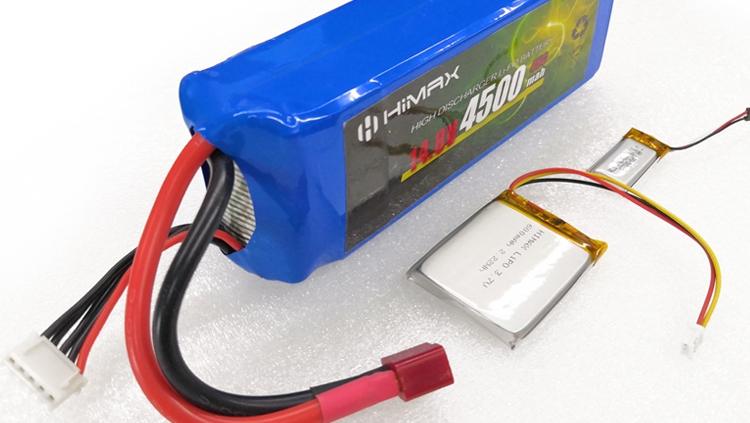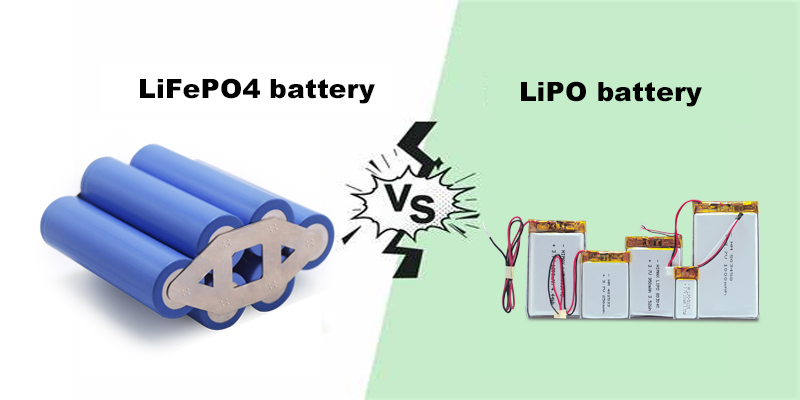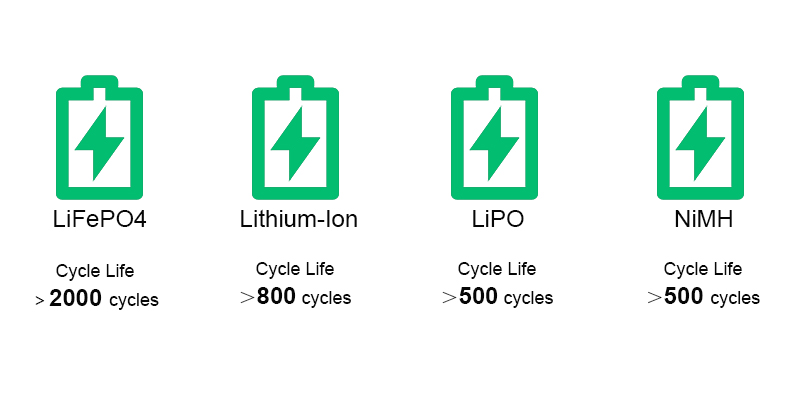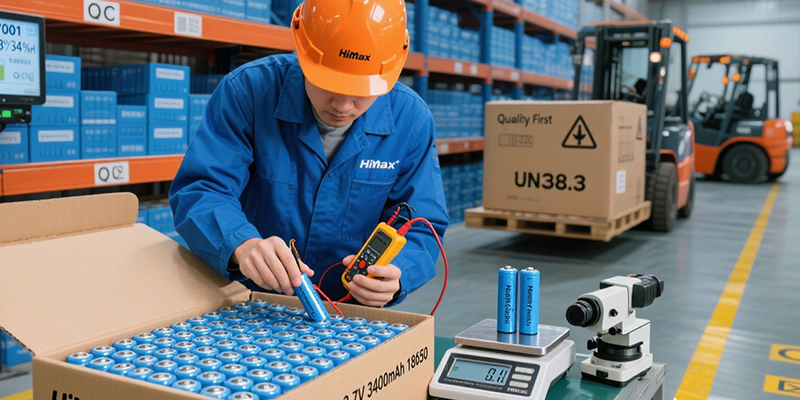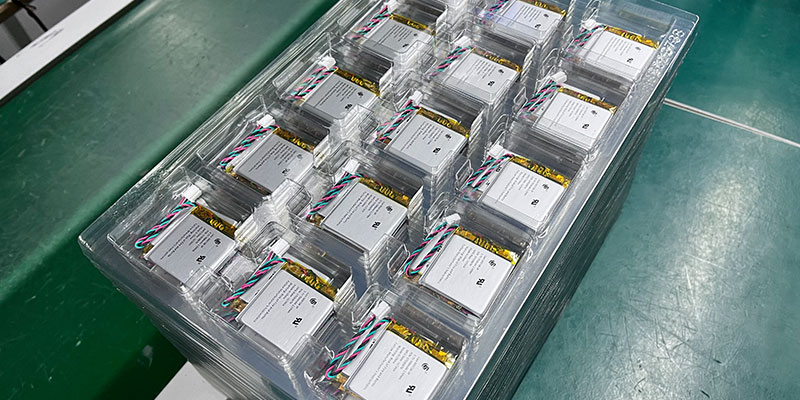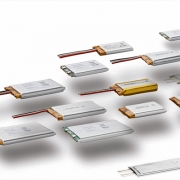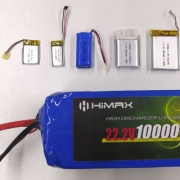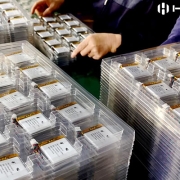Charge Retention of Li-Polymer (LiPO) Battery Packs
1. What is Charge Retention?
Charge retention refers to a battery’s ability to retain its stored electrical energy over time when not in use. This is inversely related to the self-discharge rate, which measures the rate at which a battery loses capacity on its own, without any load.
For LiPO batteries, charge retention is one of their strengths compared to older technologies like NiCd or NiMH.
2. Typical Self-Discharge Rates for LiPO Batteries
| Condition | Monthly
Self-Discharge Rate |
Explanation |
| New, premium quality cells | 1% – 3% | High manufacturing quality, low internal resistance |
| Typical LiPO cells | 3% – 5% | Industry average |
| Aged or damaged cells | 5% – 10%+ | Increased impedance, side reactions inside cell |
| Stored in hot conditions | Up to 15%+ | Accelerated chemical reactions |
Note: LiPO batteries have lower self-discharge than NiMH (≈30%/month) or lead-acid (≈5–10%/month).
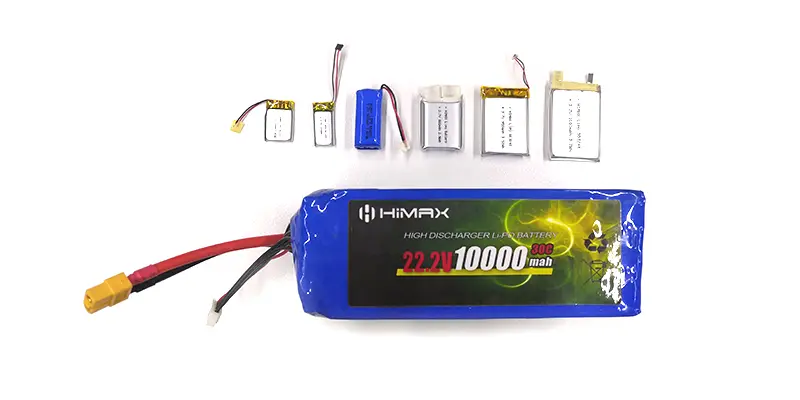
custom lipo battery packs
3. Technical Factors Influencing Charge Retention
A. Electrochemical Stability
LiPO batteries use lithium-ion intercalation chemistry.
- They typically use a lithium cobalt oxide (LCO) or nickel manganese cobalt (NMC) cathode with a carbon-based anode.
- The tight molecular structure of these materials leads to low ionic leakage, reducing self-discharge.
B. Temperature
Heat accelerates electrolyte decomposition and SEI (solid electrolyte interphase) layer growth.
Cold slows down ion mobility, reducing discharge rate — but too cold can cause lithium plating when recharging.
| Temperature | Expected Self-Discharge Impact |
| 0–15°C | Minimal, ~1–2%/month |
| 20–25°C | Normal, ~2–4%/month |
| 30–40°C | Elevated, ~4–6%/month |
| >45°C | Risk of degradation, >10%/month |
C. State of Charge (SoC) During Storage
Storing LiPO batteries at:
- 100% SoCaccelerates electrolyte oxidation and gas formation
- 0% SoCcan cause over-discharge and permanent damage
- Ideal: 40–60% SoCfor long-term storage (also called “storage mode”)
D. Manufacturing Quality
- Well-balanced cells, high-quality separator materials, and uniform coatings lead to lower parasitic losses.
- Example: Grade A 18650 LiPOpouch cells can show <2% self-discharge per month under optimal storage.
4. Real-World Charge Retention Over Time
Let’s assume a 5000mAh 3S 11.1V LiPO pack is stored at 50% SoC (~11.4V) at room temperature:
| Time Stored | Estimated Retained Charge | Assumed Conditions |
| 1 month | ~4750–4900 mAh | 2–5% loss |
| 3 months | ~4500–4750 mAh | |
| 6 months | ~4100–4500 mAh | |
| 12 months | ~3700–4200 mAh | 20–30% loss in worst case |
After 6 months or more, periodic checks and balance charging are recommended.
5.Risks of Poor Storage (Charge Retention Failure)
| Problem | Cause | Consequence |
| Over-discharge | Stored at 0% SoC | Permanent capacity loss, safety risk |
| Cell swelling | Stored at high SoC + heat | Gas formation in electrolyte |
| Voltage imbalance | Poor cell matching + time | Reduced
performance and cycle life |
| Thermal runaway | Overcharging or long-term full charge in heat | Fire/explosion risk |
6.How to Maximize Charge Retention
| Parameter | Recommendation |
| Storage SOC | 40–60% |
| Storage Temp | 15–25°C |
| Humidity | <60% RH (dry storage is best) |
| Charger use | Use “Storage Mode” if available |
| Inspection | Check voltage every 1–2 months |
Example Storage Voltage
For 3S (11.1V) battery: store at 11.1V–11.4V
For 4S (14.8V) battery: store at 14.8V–15.2V
7.Charge Retention vs. Other Battery Types
| Battery Type | Monthly Self-Discharge Rate | Charge Retention Advantage |
| LiPO | 2–5% | 🔹 Excellent |
| LiFePO₄ | 1–3% | 🔹 Excellent |
| NiMH | 20–30% | 🔻 Poor |
| Lead-Acid | 5–10% | ⚠️ Moderate |
| Alkaline | ~0.3% (primary) | 🔹 Excellent (non-rechargeable) |
8. Internal Mechanisms of Self-Discharge in LiPO
- SEI Layer Instability:Breakdown or growth of the protective layer on the anode.
- Electrolyte Decomposition:Accelerated by temperature and SoC.
- Parasitic Currents:Micro-leakage through separator or from cell defects.
- Impedance Increase:As battery ages, internal resistance increases → higher leakage current.
9. Industrial Standards/Testing for Charge Retention
Standards for charge retention testing:
- IEC 61960– Secondary lithium cells and batteries
- UL 1642– Safety for lithium batteries
- UN 38.3– Transportation testing
- JEITAor GB/T 18287-2013 – Often used in Chinese battery manufacturing
Testing typically involves storing a fully charged cell at room temperature for 28 days, followed by capacity test to evaluate % charge retained.
Conclusion
LiPO batteries have excellent charge retention (~2–5% per month under good conditions).
Long-term storage without proper SoC or at high temps can result in serious damage and reduced lifespan.
Proper storage, routine maintenance, and storage at optimal voltage and temperature are critical for extending both charge retention and overall battery life.

